Let’s get lit: The Little India Deepavali light-up
Little India was illuminated on Saturday, marking the start of the annual Deepavali light-up. The tradition, which began in 1989, has been a significant event in Singapore’s cultural calendar for the past 35 years, and adds vibrancy to the precinct. This year’s light-up will run from Sept 30 to Dec 3. A footfall of five million is expected during this period, said the Little India Shopkeepers and Heritage Association, which oversees the Deepavali celebrations there. Here’s a look at some themes from past and present light-ups, and the meanings behind them.
Sign up now: Get ST's newsletters delivered to your inbox
Follow topic:

This year's light-up in Little India showcases Radha and Krishna as the centre piece. Most Hindus hailing from South India celebrate Deepavali as the day that Lord Krishna defeated the demon, Narakasura. Radha is known to be his consort and constant companion.
ST PHOTO: DESMOND WEE
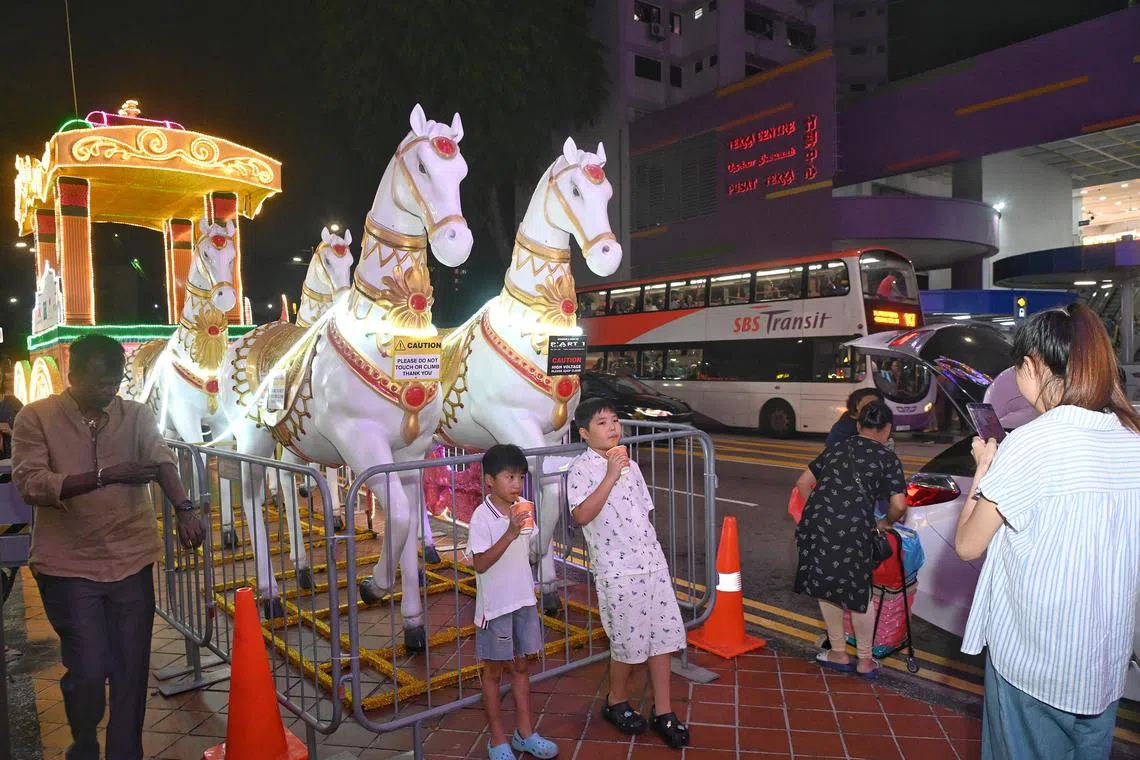
A golden chariot pulled by four horses along Serangoon Road is one of the main decorative focal points of this year's light-up. In Hindu mythology, horses represent the Sun and its yearly course.
ST PHOTO: DESMOND WEE
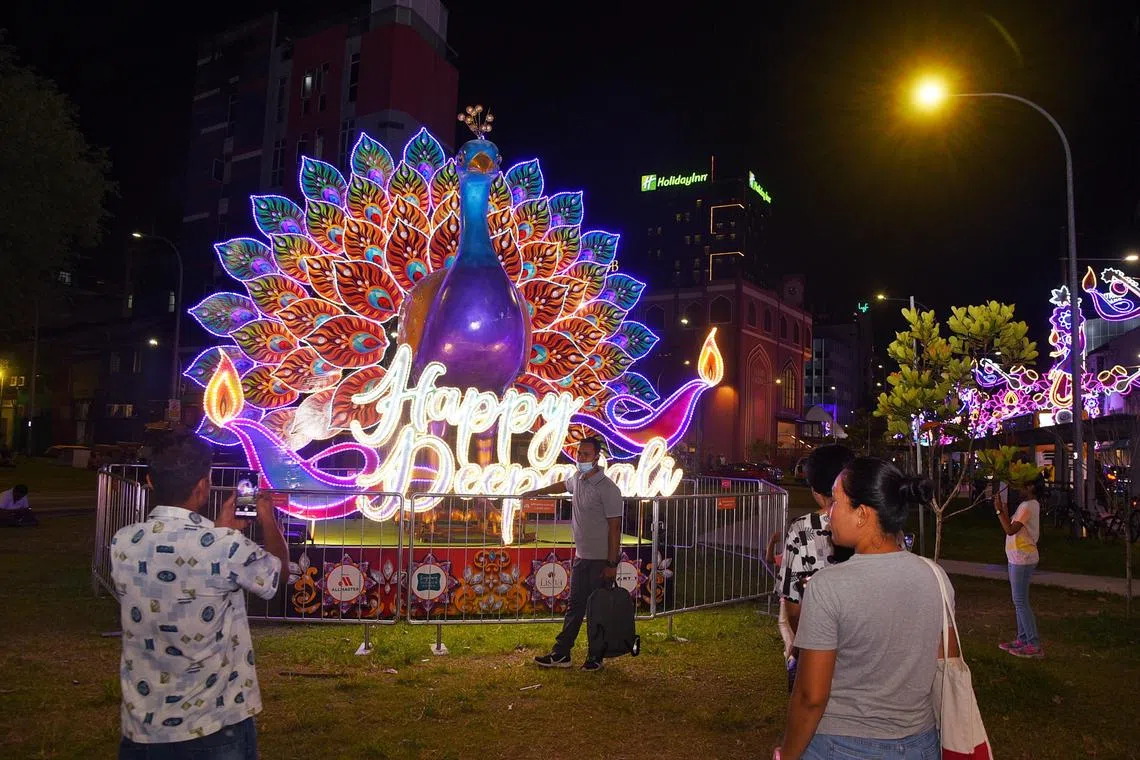
Peacocks are associated with some Hindu gods who are often depicted with them, or as adorning their feathers. The birds are believed to bring prosperity. This large peacock was featured in the 2022 light-up.
ST PHOTO: LIM YAOHUI
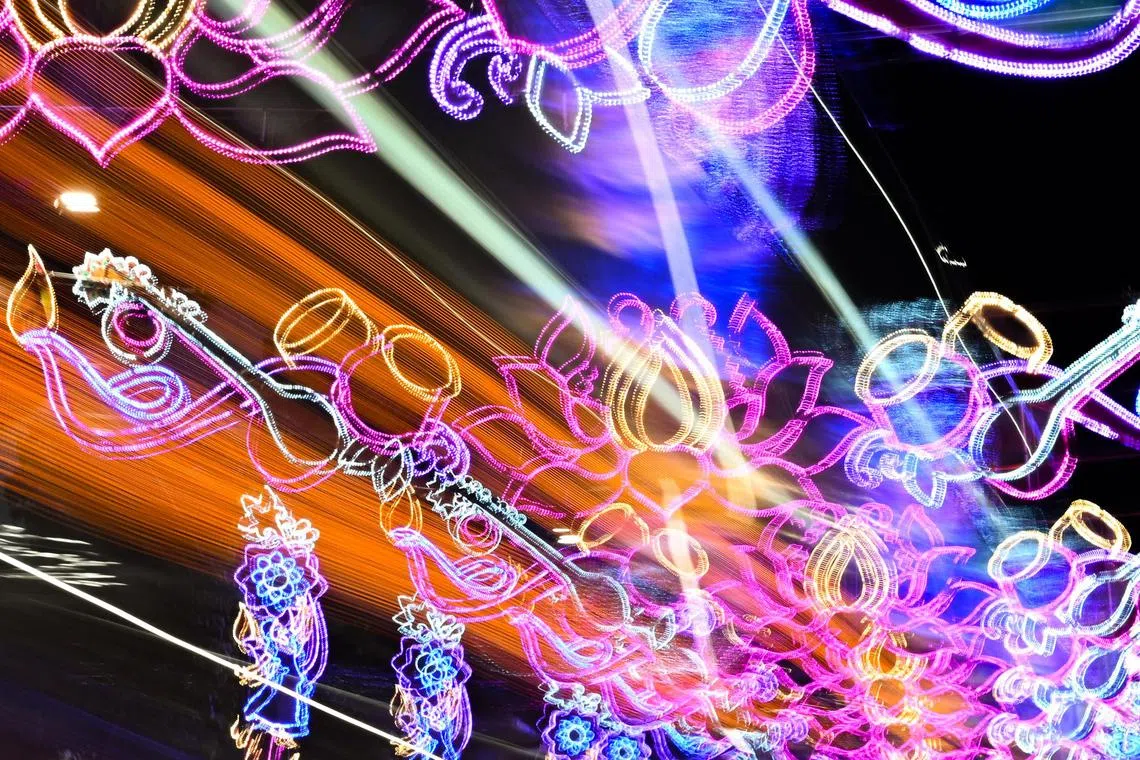
The tabla and veena are Indian classical musical instruments. Their outlines were incorporated in the 2022 light-up.
ST PHOTO: LIM YAOHUI
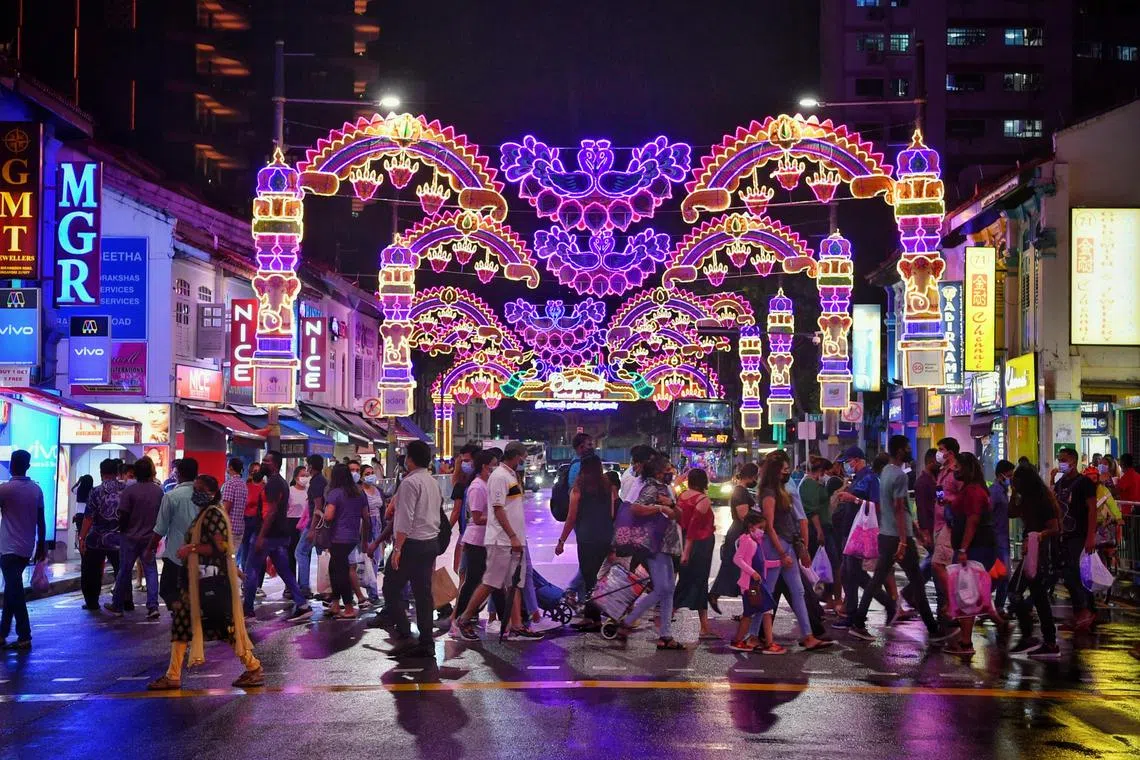
A crowd of people crossing the road at Little India under the lit-up images of peacocks and hanging oil lamps in 2021. Oil lamps symbolise enlightenment, success and prosperity.
PHOTO: ST FILE
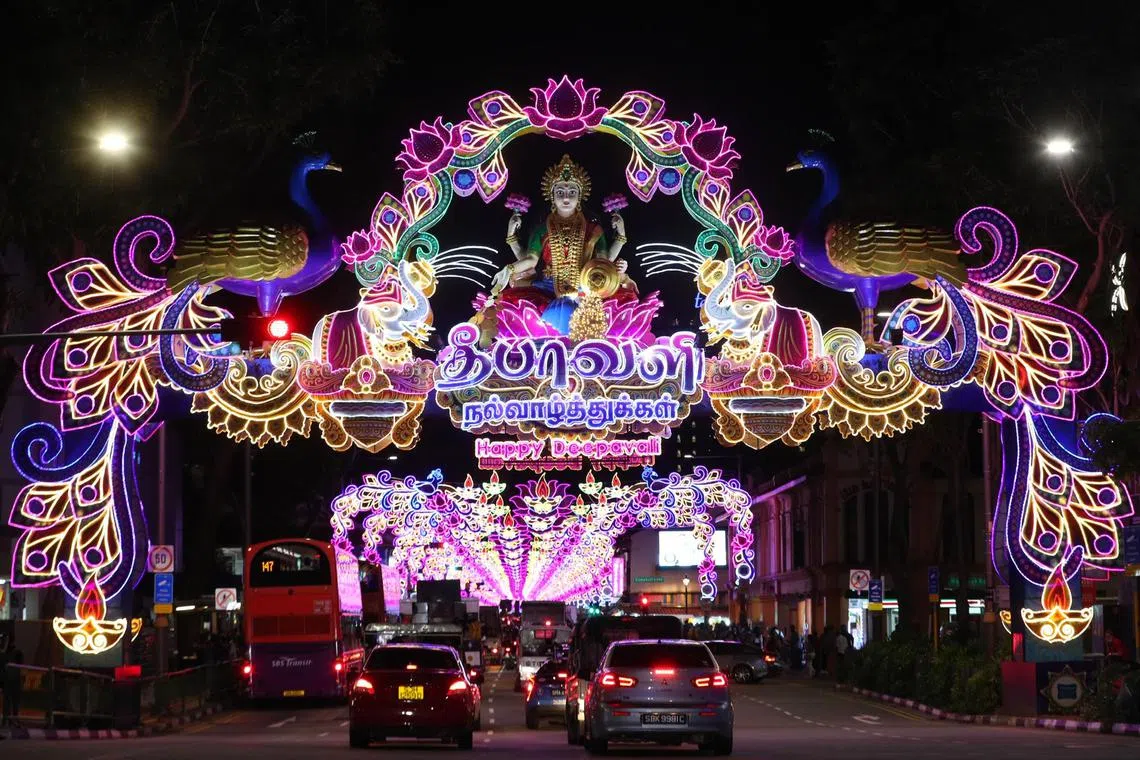
Mahalakshmi, the goddess of wealth, was featured on the main arch of the main 2020 light-up display sitting on a lotus flower, with two elephants anointing her with water.
PHOTO: ST FILE
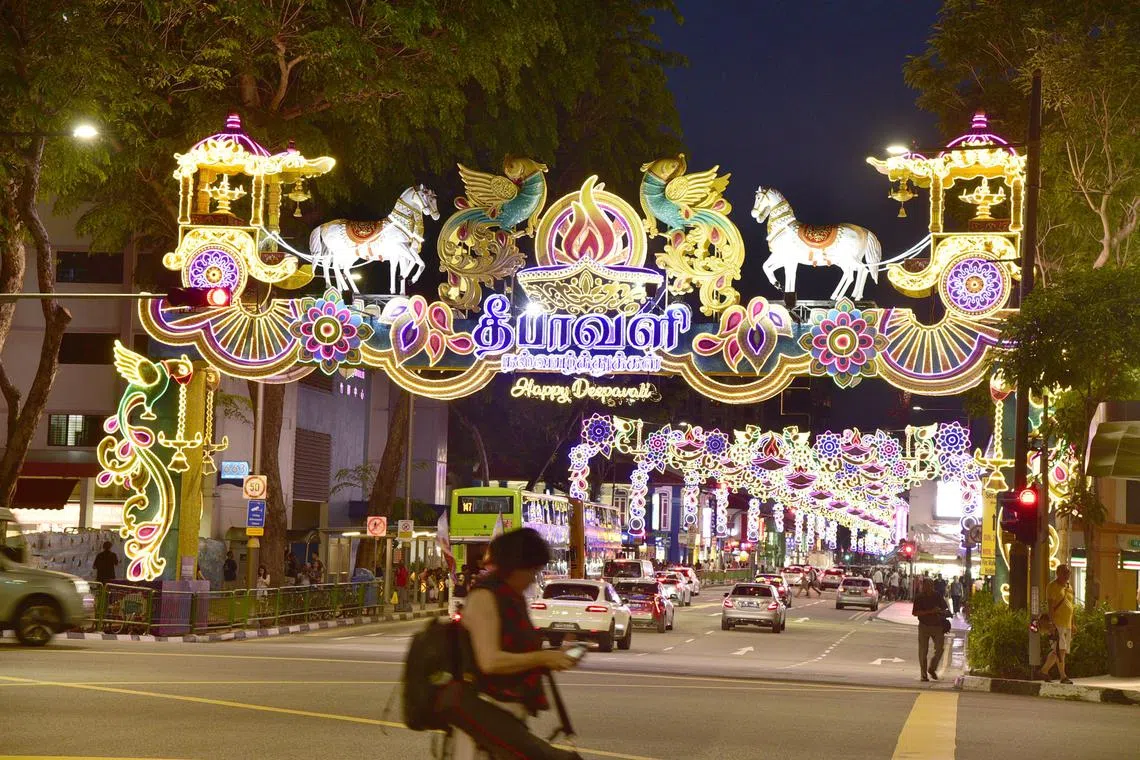
Illuminated images of oil lamps, celestial swans and a horse chariot were part of the 2019 light-up. In some aspects of Hindu mythology, the chariot represents the human body, whereas the horses symbolise the senses, the reins the mind, the charioteer the intellect.
PHOTO: DESMOND WEE/TAMIL MURASU
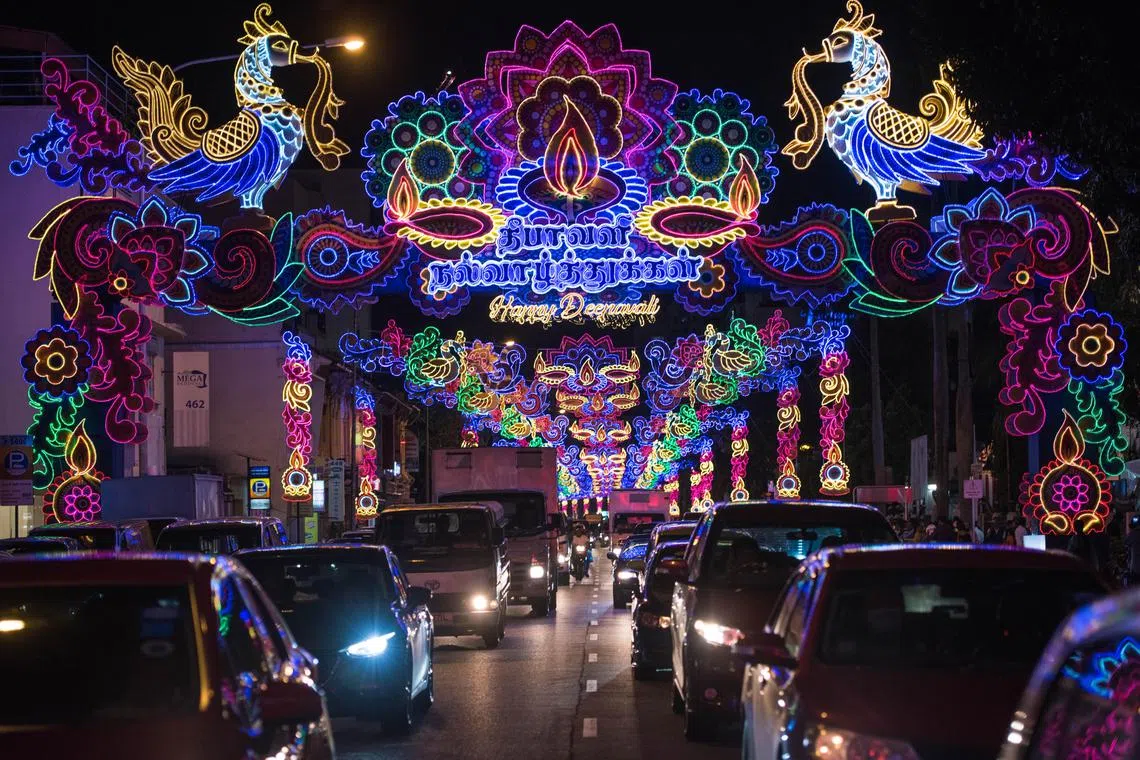
Illuminated, vibrant, mandalas were a key feature of the Deepavali light-up. Mandalas are geometric patterns that usually follow a circular shape. They are a representation of a human's spiritual journey. Just as how the mandalas have layers moving inwards, a human's spiritual journey is believed to begin externally towards the inner self.
PHOTO: ST FILE
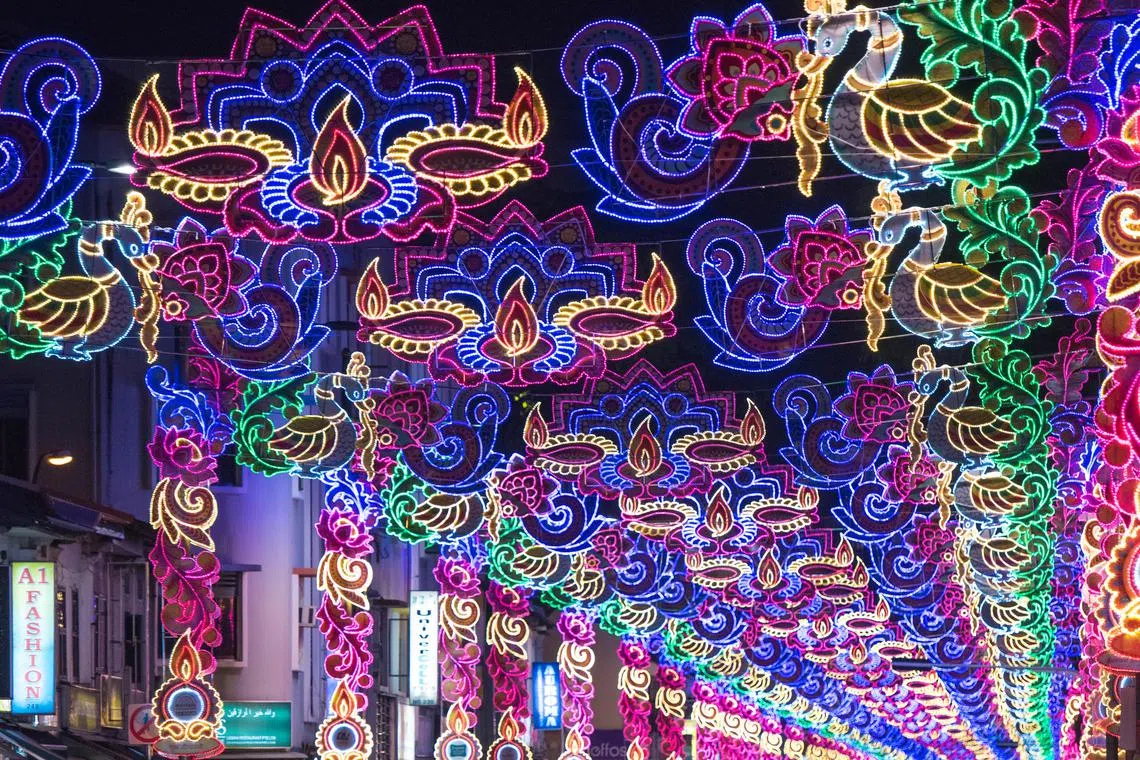
The 2018 light-up also featured celestial swans known as "annapakshi". These mythical birds have the body and beak of a swan and beautiful feathers similar to a peacock's. In Hindu mythology, they are a symbol of abundance.
PHOTO: ST FILE
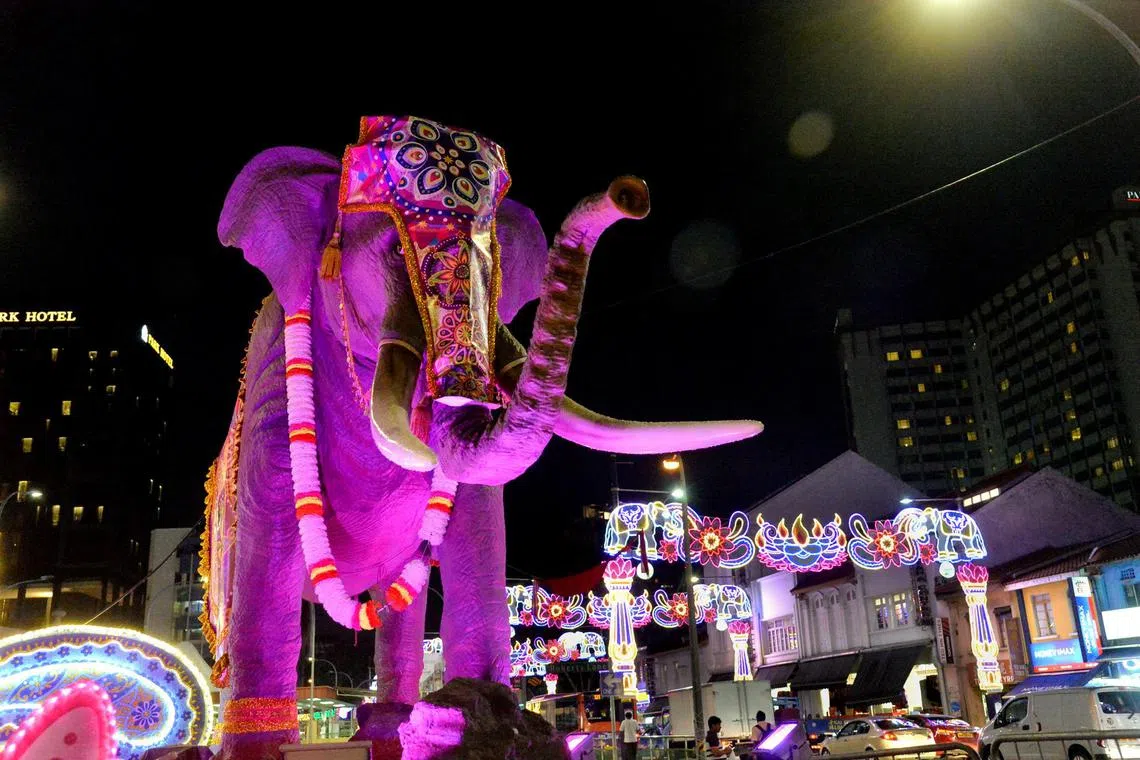
Elephants were a key aspect of the 2017 light-up. They are considered sacred in Hinduism, symbolising loyalty, power, wisdom and fertility.
PHOTO: BERITA HARIAN FILE
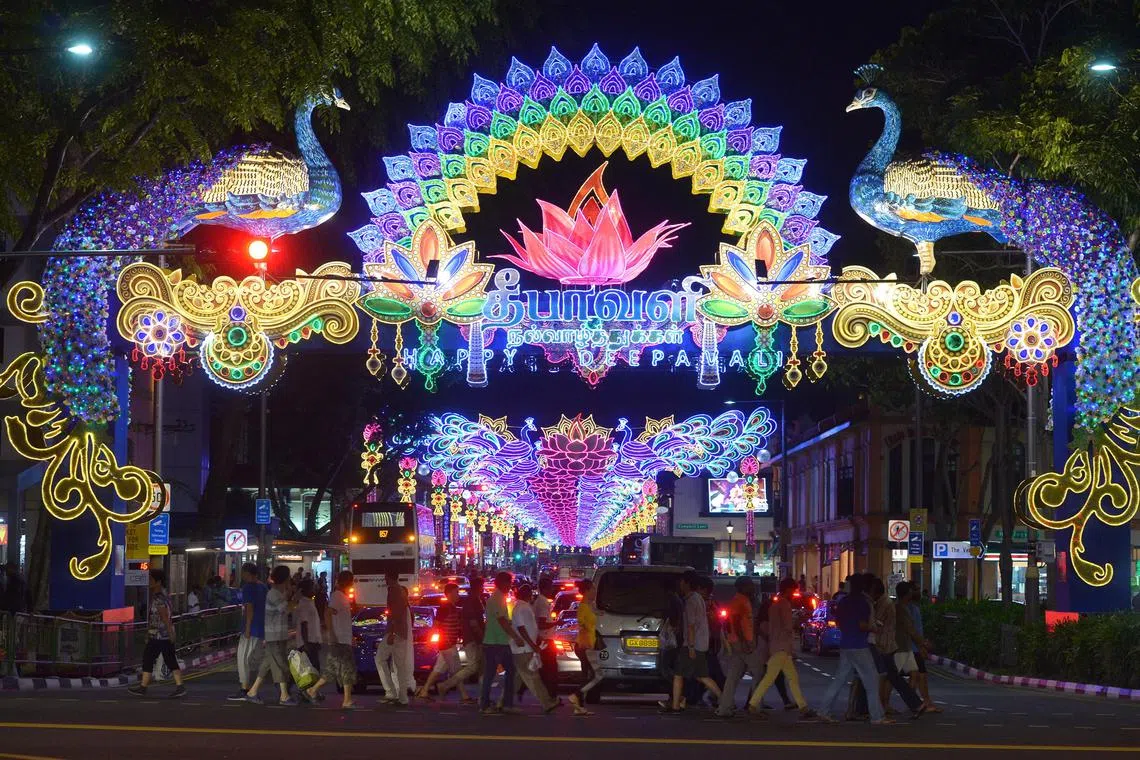
A lotus was the centrepiece of the 2016 light-up. Lotus signifies enlightenment, beauty, fertility, purity, prosperity and eternity. Representations of the lotus can often be seen on traditional Indian attires and henna designs.
PHOTO: ST FILE
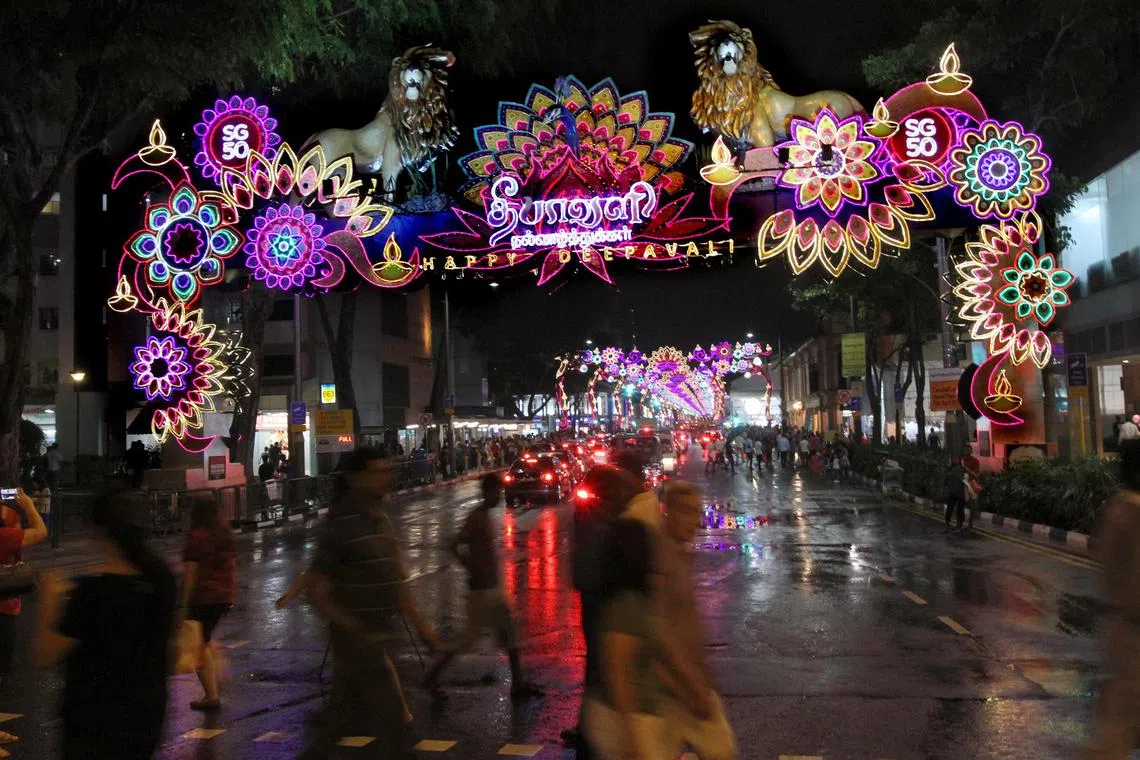
Two majestic lions sit upon the centrepiece of the 2015 light-up. Illustrations and depictions of lions are commonly used to represent royalty, courage, commanding power and strength.
PHOTO: TNP FILE


